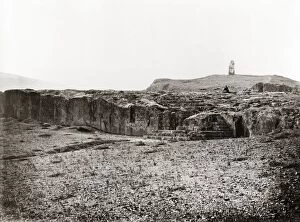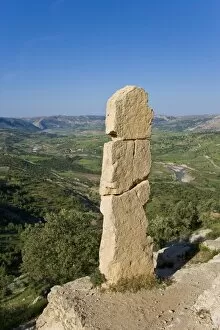Commagene Collection
"Discovering the Enigmatic Commagene: Ancient Stone Heads and Royal Legacy" Step into the mystical world of Commagene
All Professionally Made to Order for Quick Shipping
"Discovering the Enigmatic Commagene: Ancient Stone Heads and Royal Legacy" Step into the mystical world of Commagene, an ancient civilization that left behind intriguing remnants in Mount Nemrut, Adiyaman, Turkey. The enigmatic stone heads scattered across this UNESCO World Heritage Site offer a glimpse into the grandeur of a bygone era. One such momentous event was Mark Antony receiving a peace offering of 300 talents from Commagene. This historical encounter echoes through time, reminding us of the diplomatic relations and wealth that once thrived in this region. In Athens, Greece, stands the Pnyx - a public space where citizens gathered to discuss matters of great importance. In its backdrop lies the Philopappos Monument dedicated to Gaius Julius Antiochus Epiphanes Philopappos, a prince hailing from Commagene. This mausoleum serves as a testament to their noble lineage and influence even beyond their homeland. The Head of Hercules found within Mount Nemrut sanctuary further exemplifies the rich cultural heritage left behind by Commagene. Dating back to the 1st century BC, these ruins tell tales of power and mythology intertwined with history. Located in Anatolia's Eastern Turkey on Asia Minor's vast terrain lies Karakus Tumulus - resting place for members of Commagene's royal family. These burial grounds hold secrets waiting to be unraveled by archaeologists eager to understand more about this fascinating civilization. Commagene remains an enigma yet holds immense significance in our understanding of ancient civilizations. Its legacy lives on through these remarkable artifacts scattered across Asia Minor's landscapes – reminders that there is always more beneath the surface waiting for curious minds to explore and unravel centuries-old mysteries.
















